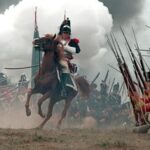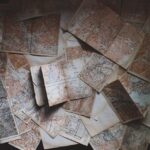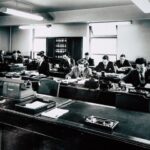Rotterdam is not a typical European city. It doesn’t follow one style or one rule when it comes to how buildings look or function. Instead, it has become a place for constant change and freedom in design. The city was heavily bombed during World War II, and most of the center was destroyed. After that, the people of Rotterdam didn’t try to rebuild what was lost. They decided to start fresh. And that decision opened the door to new ideas. Today, Rotterdam is full of strange shapes, bold lines, and creative thinking. It’s a city where an office, a food market, or even a farm can look completely different from what you expect.
This spirit of invention doesn’t stop at buildings. It also shows up in how people live and work. Whether you’re looking at a floating farm or new homes powered by the sun, Rotterdam is showing what modern life can be. It’s a different kind of city—one built on imagination. And it’s not afraid to be different, even when that means being a little strange. In that way, it has more in common with casino sites not on Gamstop than you might think—each offering something outside the normal system.
How Bombing Turned Into Opportunity
When German bombs destroyed much of Rotterdam in 1940, it changed everything. What was once a traditional city was now rubble. But rather than trying to rebuild the old streets and buildings, the people of Rotterdam saw a chance to do something new. They didn’t hold on to the past. They made space for the future. That decision gave the city its special identity. It’s why, today, you see so many different shapes and styles in one place. New buildings went up beside old ones. Architects could design without the pressure to match anything nearby. This freedom is part of what makes Rotterdam so interesting. You won’t see this mix in most other cities.
A Market That Feels Like Home
One of the best examples of this new style is the Market Hall. On the outside, it’s a huge glass horseshoe. On the inside, it’s a public food market with shops, restaurants, and even homes built into the structure. A giant colorful mural covers the ceiling. This place feels both large and personal. You can shop for groceries and look up to see someone cooking dinner in their apartment. Architect Winy Maas wanted people to feel close to one another, even in a big space. He believes that when people share spaces like this, they feel safer and more connected. The Market Hall isn’t just a building. It’s a way of thinking about how people live and meet in a city.
Designing Homes With the Planet in Mind
Not far from the busy city center, a small new neighborhood shows how housing can be better for the planet. On the site of a former sports field, families were invited to design their own homes. Each house looks different, but they all follow rules about size, placement, and energy use. Architect Stefan Prins and his family live in one of these homes. Their house runs fully on solar power and has no gas connection. It also has large windows placed carefully to let in sunlight all year. This project proves that modern design doesn’t have to mean waste. It can mean saving energy, using better materials, and still living in comfort. When you look at the neighborhood, you see that caring for the environment doesn’t have to look boring. It can be creative too.
A Floating Farm That Breaks the Rules
Rotterdam is known for doing things differently. But even here, a floating dairy farm is unusual. Built in the city’s harbor, this farm is not just about raising cows. It’s about showing how farming can adapt to future problems like flooding or land shortages. The farm includes solar panels, clean energy systems, and short delivery routes to local stores. Minke van Wingerden, one of the farm’s designers, says they want to make farming exciting again. They also want to be open. Visitors can see how milk is processed and how waste is handled. It’s a place that mixes design, food, and education in a way that feels fresh. And even though it floats on water, it feels like a part of the city.
Cube Houses and Creative Spaces
In Rotterdam, even the older experiments in architecture still feel bold. One good example is the cube houses designed by Piet Blom in the 1970s. These are homes tilted on one edge, shaped like boxes turned on a corner. Next to them is a building known as the Pencil because of its pointed shape. These strange buildings still catch attention. They remind you that architecture doesn’t always need to follow straight lines. They also show that fun and design can go together. People live in these homes. Tourists take photos. And the city keeps its reputation as a place where odd ideas can find a home.
Freedom Is the Style
If you try to name one style that defines Rotterdam, you might have a hard time. And that’s the point. Architect Reinier de Graaf says that defining a style would limit the city. Rotterdam’s beauty comes from not matching. Old office buildings sit next to glass towers. Apartments hang over markets. Farms float in the harbor. There’s no rule. And that’s what makes the city feel alive. People in Rotterdam like that they don’t have to fit a mold. The city has made space for imagination. And that gives you, as someone living or visiting there, the freedom to imagine something different for yourself too.
A City That Learns as It Grows
Rotterdam keeps changing. New projects keep rising. But the city also learns from what it builds. Many new buildings include green energy systems. Architects think about where materials come from and how to reduce waste. The city understands that modern life must deal with climate change. So, whether it’s a small home or a big public project, sustainability is now part of the design. Rotterdam doesn’t just look new. It thinks in new ways too. It sees design as a way to solve problems—not just to make pretty buildings. That’s something more cities could learn from.
Building a Better Future With Design
In Rotterdam, you can see what happens when people are not afraid to try new things. You get buildings that surprise you. You get neighborhoods that care about the earth. And you get a city that invites you to be part of the process. From cube houses to floating farms, from market halls to smart homes, every corner of Rotterdam has something to say. And the message is clear: design matters, not just for how a city looks but for how people live, connect, and grow. If you’re thinking about what the future of city life could be, Rotterdam gives you a good place to start.



